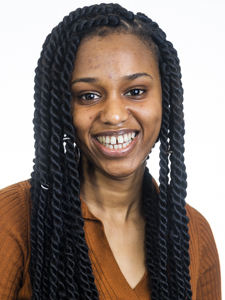Date
- 2024 Jun 05
- Expired!
Time
- 13:00
Presenter

Farhiya Alex Sellman
More Info
Defence of doctoral thesis: Farhiya Alex Sellman – Characterization and Utilization of Interactions in Wet and Dry Cellulose Nanofibrillar Networks
KTH | WWSC
The defense is taking place at F3, KTH, and is possible to follow via Zoom.
Opponent: Professor Alexander Bismarck, University of Vienna
Supervisor: Professor Lars Wågberg
Abstract:
Expanding our understanding of how cellulose fibers and fibrils interact with water and its effect on their inherent properties is needed to optimize their utilization in the making of novel bio-based materials, but also useful in more traditional products (pulp, paper, and packaging).
The overall objective of the work in this thesis was to deepen the understanding of drying-induced structural changes and cellulose-water interactions using cellulosic model materials. Cellulose nanofibrils (CNFs) were employed as they present a distinct advantage with their defined geometry and controlled surface chemistry compared to macroscopic cellulose fibers.
The first part considers the fundamental interactions of CNFs in contact with water and by water removal, and is devoted to identifying the molecular mechanisms behind the process known as hornification. This was done by studying the exposure of CNF sheets to different heat treatments to establish a connection between their reswelling properties, chemical and structural characteristics, and mechanical behavior. The findings indicate that hornification is governed by non-covalent interactions and that the diffusion of water back into a hornified CNF network is kinetically limited. Furthermore, the influence of fibril aspect ratio and chemical functionality on the mechanical properties of wet fibrillar networks was studied. Fibrils were prepared from fibers with different hemicellulose content. It was found that longer fibrils formed stiffer and more ductile materials, owing to a longer-range and more uniform distribution of stress transfer. Additionally, high aspect ratio fibrils form networks capable of holding larger amounts of water. It was also possible to elucidate the influence of aspect ratio on the network formation, where long and short fibrils form networks with different topologies. These results were integrated into a mechanical network model to present an improved elastoplastic description of the network properties.
The second part of the thesis presents potential applications where control of the water uptake in the fibrillar networks is required. Anisotropic fibrillar hydrogels were prepared to function as actuators and superabsorbents. With the help of the knowledge built in the first part of the work, the water uptake in the fibrillar networks could be maximized. This resulted in CNF hydrogel actuators far surpassing conventional hydrogel used in actuation performance and integration of CNF sheets in a superabsorbent heterostructure, where the most strongly immobilized water can be retained at high pressures.

